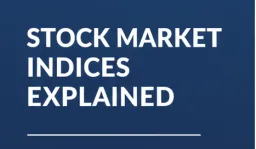What is the S&P 500 Index

Introduction
The S&P 500 Index is a market-capitalization-weighted index of the 500 largest U.S. publicly traded companies. The S&P 500 Index was created by Standard & Poor’s (S&P), who also publish other financial tools such as its flagship credit rating agency and its S&P Global family of indexes like those tracking emerging markets, real estate investment trusts (REITs), hedge funds and commodities.
The constituents of the S&P 500 are selected by committee. To be included in the index, a company must have an excellent reputation, demonstrate sustained growth and be of interest to large numbers of investors. A company must also meet certain liquidity-based size requirements at the time of each semi-annual reconstitution.
The index has been maintained since 1957 by Standard & Poor’s, who use their own proprietary methodology for calculating it (which was revised in 2001). This methodology involves sampling stock prices throughout U.S., including options and futures contracts traded on exchanges such as NASDAQ or NYSE Euronext as well as both American Depositary Receipts (ADRs) denominated in USD and foreign shares listed on exchanges outside U.S..
Components of the S&P 500
The S&P 500 Index captures approximately 80% of overall U.S stock market capitalization using float factor methodology which aims at including only those shares available for trading on major exchanges rather than held by insiders such as founders or management teams who may choose not to sell their holdings back into circulation even if they wanted to do so; this makes sure that any changes in share price reflect trading activity instead of internal decisions made without considering potential buyers from outside
Because the index is weighted by market capitalization, the larger companies have more influence over its performance. The S&P 500 is commonly used as a proxy for the stock market as a whole. It is one of the most commonly used benchmarks for measuring the performance of large-cap stocks in the United States, similar to how an index fund tracks the performance of an entire market or a country’s economy.
| Stock Ticker | Company Name |
| AAPL | Apple Inc. |
| MSFT | Microsoft Corp. |
| AMZN | Amazon.com, Inc. |
| TSLA | Tesla, Inc. |
| GOOGL | Alphabet Inc. Class A |
| GOOG | Alphabet Inc. Class C |
| NVDA | Nvidia Corp. |
| BRK.B | Berkshire Hathaway Inc. |
| META | Meta Platforms, Inc. Class A |
| UNH | UnitedHealth Group Inc. |
The top 10 companies in the S&P 500 represent about 25 percent of its total value.
S&P 500 – A proxy for the stock market
The S&P 500 Index is the most commonly used index to gauge overall market performance. The term “the stock market” refers to a collection of stocks that represent the entire U.S. equity market and not just one or two companies. The S&P 500 Index is a broad measure of the U.S. stock market and includes approximately 500 of its largest companies by capitalization (total value). It’s important to note that this doesn’t mean there are exactly 500 individual stocks in the index; it simply means that these are 500 large-cap companies with high trading volumes, liquidity levels, and strong investor interest in their shares.
The S&P 500 Index measures changes in aggregate stock prices across its components using an equally weighted average method that excludes certain issues such as options contracts but includes derivatives on futures contracts where cash settlement may occur immediately upon expiration date rather than exercise dates specified within options contracts themselves being exercised prior thereto – which makes it easier for retail investors looking at making investments without having any knowledge about how different markets work!
Conclusion
The S&P 500 is not a perfect representation of the stock market, but it is an important benchmark. It’s also worth noting that while this index only includes U.S. companies, many investors look to it as a proxy for other global markets as well. When deciding how much of your portfolio should be invested in stocks, it’s helpful to consider what makes sense based on your risk tolerance and goals.









